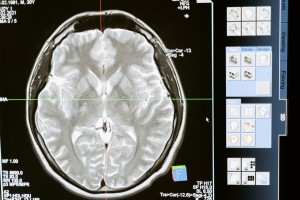
 Become a PowerPoint Guru by Dave Tracy
Become a PowerPoint Guru by Dave Tracy
Learn the methodologies, frameworks, and tricks used by Management Consultants to create executive presentations in the business world.

 Become a PowerPoint Guru by Dave Tracy
Become a PowerPoint Guru by Dave Tracy
 Organizational leadership can draw on 3 Strategic Thinking Games to master Business Strategy and apply in varied scenarios and organizational structures. The Strategic Thinking Games provide Decision Making models for senior executives to choose from and use as per the situation.
Organizational leadership can draw on 3 Strategic Thinking Games to master Business Strategy and apply in varied scenarios and organizational structures. The Strategic Thinking Games provide Decision Making models for senior executives to choose from and use as per the situation.
The Strategic Thinking Games are based on mathematics and statistics, particularly Probability Theory, and exhaustive research into the Business Strategy realm. Probability Theory is actually a branch of mathematics that deals with analysis of random phenomena. The basic element of Probability Theory is an experiment that can be at least hypothetically repeated under identical conditions, but may lead to different outcomes on different trials.
Each of the Strategic Thinking Games warrants employing a different mindset and decision-making approach to confront the challenges presented by a particular problem. Executives can apply these Strategic Thinking Models to control their future:
Let’s discuss these Strategic Thinking Models in detail.
The 1st Strategy game allows the players to make 40 blind draws from a pot holding 25 black and 75 red balls. It costs $10 per draw—which has to be paid beforehand—and it allows the players the opportunity to win $20 on drawing a red ball but naught on drawing a black ball. The game imitates a scenario where managers make informed bets about the future based on data and insights into the level of uncertainty encountered.
The Planning as Positioning Model enables the executives to learn about their industry and competition, gauge ambiguities and uncertainties, and select markets that have the potential to generate a positive Return on Investment (ROI).
A classic example of a company operating on the Planning & Positioning Model was the International Telephone and Telegraph Corporation (ITT). For 17 years, the company was led by Harold Geneen (from 1960 to 1977). Harold Geneen was unrestricted by any company mission. He expanded in multiple industries, acquired around 350 enterprises from varied industries, including auto parts, cosmetics, hospitality, insurance, and technology. As a formal accountant, Harold considered facts as indisputable, final, and a foundation for making strategic decisions. He would travel to far-flung regions to meet his business unit managers, who were free to make their own strategic decisions but were responsible for their unit’s performance and objectives’ achievement.
The 2nd Strategy game allows the players to blind draw from a pot containing an unknown mix of red and black balls. This time it costs $5 per draw. Players have to bet on either color before each draw. They can draw up to 50 times, or stop whenever they want, and win $20 if they draw the right ball. This game imitates a scenario for training managers to dynamically respond to upcoming events with unpredictable degree of uncertainty.
Through the pot filled with balls experiment, it was revealed that when people are given complicated choices, they behave in manners conflicting with their beliefs. In his famous Ellsberg Paradox, Ellsberg hypothesized that people make illogical preferences in order to avoid ambiguity. The Organizational Learning Model underlines that in a world full of uncertainties instead of spending too much time predicting the future, planning and positioning, organizations should devise and implement an evolving strategy, take one step at a time, search for viable patterns, and then adjust the course based on results.
An example of successful implementation of the 2nd Strategic Thinking Model is Corning Inc. that embraced Organizational Learning to develop a healthy product pipeline. The company developed Pyrex, TV tubes…..
Interested in learning more about the 3 Strategic Thinking Games? You can download an editable PowerPoint on Strategic Thinking Games here on the Flevy documents marketplace.
You can download in-depth presentations on this and hundreds of similar business frameworks from the FlevyPro Library. FlevyPro is trusted and utilized by 1000s of management consultants and corporate executives. Here’s what some have to say:
“My FlevyPro subscription provides me with the most popular frameworks and decks in demand in today’s market. They not only augment my existing consulting and coaching offerings and delivery, but also keep me abreast of the latest trends, inspire new products and service offerings for my practice, and educate me in a fraction of the time and money of other solutions. I strongly recommend FlevyPro to any consultant serious about success.”
– Bill Branson, Founder at Strategic Business Architects
“As a niche strategic consulting firm, Flevy and FlevyPro frameworks and documents are an on-going reference to help us structure our findings and recommendations to our clients as well as improve their clarity, strength, and visual power. For us, it is an invaluable resource to increase our impact and value.”
– David Coloma, Consulting Area Manager at Cynertia Consulting
“FlevyPro has been a brilliant resource for me, as an independent growth consultant, to access a vast knowledge bank of presentations to support my work with clients. In terms of RoI, the value I received from the very first presentation I downloaded paid for my subscription many times over! The quality of the decks available allows me to punch way above my weight – it’s like having the resources of a Big 4 consultancy at your fingertips at a microscopic fraction of the overhead.”
– Roderick Cameron, Founding Partner at SGFE Ltd
 Business Transformation initiatives are typically undertaken to solve a pressing issue, bring about improved performance, or to serve customers better. A critical element of the success of such initiatives entails transforming the existing behaviors of the employees across the organization. However, this isn’t a straightforward task.
Business Transformation initiatives are typically undertaken to solve a pressing issue, bring about improved performance, or to serve customers better. A critical element of the success of such initiatives entails transforming the existing behaviors of the employees across the organization. However, this isn’t a straightforward task.
Attitudes and practices get reinforced in people by following established routines day in and day out. Such practices become a part of an Organizational Culture over time. Ingrained organizational behaviors and practices aren’t considered burdening until the organization’s performance starts declining considerably over time. That’s when the leaders start thinking about changing these beliefs and habitual actions.
Psychology and Neuroscience can help enterprises change the deeply embedded attitudes and practices of people and replace those with new beliefs and practices. Leading organizations are using psychology and brain research to induce successful change. Specifically, they focus on the right priorities to enable Organizational and Behavioral Change and take the following 6 steps—or 6 Rs of Behavioral Change:
Let’s dive deeper into the first 3 steps critical to render behavioral change.
The first step involves the leadership reflecting on the behaviors that are required to be transformed. Leaders are responsible for articulating the future vision of an organization, prioritizing and implementing initiatives to achieve the vision, and take measures to tackle disruption caused by technology and rivals. Self-Reflection on undesired behaviors by role models (including senior leaders) is essential to make other people ponder over their behaviors.
Leadership behaviors inform the workforce about the Transformation required, assist in championing the agenda, and make these behaviors resonate across the board. Individuals, in turn, should contemplate on the alignment of their behaviors with their personal / organizational goals, think of new improved ways of doing things, and dump convenient yet unproductive behaviors.
The 2nd step of the 6 Rs to Organizational Change necessitates categorizing and naming the flawed or unfit behaviors. Neuroscience research has revealed that by naming behaviors and understanding that thoughts are merely ideas, persons with Obsessive Compulsive Disorder can disregard useless thoughts and behaviors that trigger them to wash their hands again and again.
Relabeling thoughts allows individuals to stop reflecting on useless thoughts. Likewise, in an organizational setting leadership needs to evaluate which shared thoughts don’t work well, categorize them, and communicate the reasons for their unsuitability across the organization.
In this step, senior management replaces outdated beliefs and behaviors and outlines the vision or desired objectives and behaviors. The outlined desired objectives and behaviors need to be explicit, translated into daily actions, and attractive to the people. This may warrant training of people to reflect on the desired expectations and behaviors collectively. Effective communication of benefits of altered objectives and behaviors assists in subsiding the unrest associated with change in people and relaxing their mind and thoughts. This must include informing people that uncertainties are part of business and that they should keep their focus on organizational values and what matters most during change. Reflection creates a sense of ownership among employees that is otherwise difficult to be achieved by any cascaded top-to-bottom directives.
Interested in learning more about the other steps or Rs critical to engender Change ? You can download an editable PowerPoint on 6 Rs to Behavioral Change here on the Flevy documents marketplace.
You can download in-depth presentations on this and hundreds of similar business frameworks from the FlevyPro Library. FlevyPro is trusted and utilized by 1000s of management consultants and corporate executives. Here’s what some have to say:
“My FlevyPro subscription provides me with the most popular frameworks and decks in demand in today’s market. They not only augment my existing consulting and coaching offerings and delivery, but also keep me abreast of the latest trends, inspire new products and service offerings for my practice, and educate me in a fraction of the time and money of other solutions. I strongly recommend FlevyPro to any consultant serious about success.”
– Bill Branson, Founder at Strategic Business Architects
“As a niche strategic consulting firm, Flevy and FlevyPro frameworks and documents are an on-going reference to help us structure our findings and recommendations to our clients as well as improve their clarity, strength, and visual power. For us, it is an invaluable resource to increase our impact and value.”
– David Coloma, Consulting Area Manager at Cynertia Consulting
“FlevyPro has been a brilliant resource for me, as an independent growth consultant, to access a vast knowledge bank of presentations to support my work with clients. In terms of RoI, the value I received from the very first presentation I downloaded paid for my subscription many times over! The quality of the decks available allows me to punch way above my weight – it’s like having the resources of a Big 4 consultancy at your fingertips at a microscopic fraction of the overhead.”
– Roderick Cameron, Founding Partner at SGFE Ltd
 Business Transformation initiatives are typically undertaken to solve a pressing issue, bring about improved performance, or to serve customers better. A critical element of the success of such initiatives entails transforming the existing behaviors of the employees across the organization. However, this isn’t a straightforward task.
Business Transformation initiatives are typically undertaken to solve a pressing issue, bring about improved performance, or to serve customers better. A critical element of the success of such initiatives entails transforming the existing behaviors of the employees across the organization. However, this isn’t a straightforward task.
Attitudes and practices get reinforced in people by following established routines day in and day out. Such practices become a part of an Organizational Culture over time. These ingrained behaviors and practices aren’t considered burdening until the organization’s performance keeps declining considerably over time. That’s when the leaders think about changing these beliefs and habitual actions.
Psychology and Neuroscience can help enterprises change the deeply embedded attitudes and practices of people and replace those with new beliefs and practices. Leading organizations are using psychology and brain research to induce successful Organizational Transformation.
The practices that these organizations employ to engender Transformation are based on the following 6 core Principles of Neuroscience:
Let’s dive deeper into these first 3 principles of Neuroscience.
Our thinking patterns are stored in circuits by brain parts—including the habit center (basal ganglia), amygdala (emotion center), and hypothalamus (which manages hunger, thirst etc.). These brain parts, especially the basal ganglia, process info unconsciously and the activity feels rewarding to the individual. This activity makes stronger neuronal connections with other areas and gets the activity reinforced.
For the desired behaviors and practices to get embedded, the organization need to make stronger connections with the entire workforce’s’ basal ganglia to enable deep rooted neuronal circuits. The practices ingrained this way are difficult to remove.
People with obsessive compulsive disorder keep deliberating on their impulse to wash hands to ensure cleanliness. This fortifies brain circuits in the basal ganglia, which takes over their behaviors. However, Neuroscience reveals that even the most well-established notions can be altered. This can be done by making the individuals aware of what they are thinking and where their focus is in a given moment.
Training and directing people to think about their thoughts can make them conscious of their undesired behaviors, disengages brain areas notable for causing distraction, and adopt new behaviors.
The 3rd principle highlights that persistent focus on unfamiliar, desired thoughts and objectives activates the habit center of the brain, which turns these desired thoughts into habits. The mechanism according to Neuroscience is such that basal ganglia’s caudate nucleus region processes…
Interested in learning more about the other principles of Behavioral Transformation? You can download an editable PowerPoint on 6 Core Principles of Neuroscience here on the Flevy documents marketplace.
You can download in-depth presentations on this and hundreds of similar business frameworks from the FlevyPro Library. FlevyPro is trusted and utilized by 1000s of management consultants and corporate executives. Here’s what some have to say:
“My FlevyPro subscription provides me with the most popular frameworks and decks in demand in today’s market. They not only augment my existing consulting and coaching offerings and delivery, but also keep me abreast of the latest trends, inspire new products and service offerings for my practice, and educate me in a fraction of the time and money of other solutions. I strongly recommend FlevyPro to any consultant serious about success.”
– Bill Branson, Founder at Strategic Business Architects
“As a niche strategic consulting firm, Flevy and FlevyPro frameworks and documents are an on-going reference to help us structure our findings and recommendations to our clients as well as improve their clarity, strength, and visual power. For us, it is an invaluable resource to increase our impact and value.”
– David Coloma, Consulting Area Manager at Cynertia Consulting
“FlevyPro has been a brilliant resource for me, as an independent growth consultant, to access a vast knowledge bank of presentations to support my work with clients. In terms of RoI, the value I received from the very first presentation I downloaded paid for my subscription many times over! The quality of the decks available allows me to punch way above my weight – it’s like having the resources of a Big 4 consultancy at your fingertips at a microscopic fraction of the overhead.”
– Roderick Cameron, Founding Partner at SGFE Ltd
 Employee behaviors are critical for the success of Business Transformation endeavors. However, transforming the ingrained behaviors and mindsets of the workforce isn’t straightforward, and when tackled cause the enterprise’s emotional state to go down.
Employee behaviors are critical for the success of Business Transformation endeavors. However, transforming the ingrained behaviors and mindsets of the workforce isn’t straightforward, and when tackled cause the enterprise’s emotional state to go down.
Leaders need to identify the components of Culture that are in line with their Corporate Strategy. They have to ascertain and harness the positive elements of culture that can drive the desired Transformation and suppress those that obstruct it.
For the desired Organizational Culture to sustain, leaders should work on gaining acceptance of the transformed behaviors. Leaders who do not give culture its due importance risk ruining their strategic endeavors, as they lack the commitment required from the employees to achieve success.
The real question is why senior leaders fail to use the positive elements of Organizational Culture constructively in the first place. The answer is simple; there are 4 common yet wrong assumptions—or myths—regarding culture change that are deeply established in most businesses that are anything but facts. Paying heed to—and acting on—these 4 myths results in grave consequences:
When senior executives devise a strategy to transform the deeply entrenched organizational culture—by putting in place new policies, practices, reward structures, and performance management systems—there is strong resistance that outplays the strategy.
This is primarily due to employees’ reservations and uncertainties regarding the impact of these changes on their work, colleagues, atmosphere, routines, family, and their enterprise’s reputation. Transforming the Organizational Culture using the individual’s actions and conduct necessitates seeking assistance from 7 guiding principles:
Application of these guiding principles facilitates in transpiring successful culture change. Let’s dive deeper into a few of these guiding principles.
The first guiding principle to changing the culture involves starting rationally and pragmatically. It is not feasible to strive to change every behavior at once. Leaders need to concentrate on the behaviors most critical for the organization. The ones that reverberate with the existing company culture and have a key role in improving the organizational performance. This entails ascertaining groups of employees whose behaviors should be transformed immediately. A clear demonstration of the requisite changes goes a long way in reinforcing the desired behaviors and culture in the organization.
The 2nd principle to changing culture involves emphasizing new behaviors. The desired behaviors should be reinforced using formal and informal mechanisms. Formal reinforcement mechanisms include metrics, processes, appraisals, salary reviews, training, and incentives to reward new behaviors. These formal mechanisms allow people to practice new behaviors repetitively, until they begin to realize their value. Informal reinforcement mechanisms include support networks and associations to nurture sensitivity and devotion needed to cope with uncertainties.
Organizational Culture Transformation necessitates distinguishing role models to demonstrate the desired behaviors. Culture change begins when change practitioners act by modeling the new behaviors. These change practitioners are pride builders for an organization. The examples set by these practitioners assist in inculcating pride in others about embracing the desired behaviors. This action is referred to as “positive deviance” or constructive non-conformity. These pride builders in turn identify and develop more exemplars.
Interested in learning more about the other guiding principles of culture change? You can download an editable PowerPoint on 7 Guiding Principles of Culture Change here on the Flevy documents marketplace.
You can download in-depth presentations on this and hundreds of similar business frameworks from the FlevyPro Library. FlevyPro is trusted and utilized by 1000s of management consultants and corporate executives. Here’s what some have to say:
“My FlevyPro subscription provides me with the most popular frameworks and decks in demand in today’s market. They not only augment my existing consulting and coaching offerings and delivery, but also keep me abreast of the latest trends, inspire new products and service offerings for my practice, and educate me in a fraction of the time and money of other solutions. I strongly recommend FlevyPro to any consultant serious about success.”
– Bill Branson, Founder at Strategic Business Architects
“As a niche strategic consulting firm, Flevy and FlevyPro frameworks and documents are an on-going reference to help us structure our findings and recommendations to our clients as well as improve their clarity, strength, and visual power. For us, it is an invaluable resource to increase our impact and value.”
– David Coloma, Consulting Area Manager at Cynertia Consulting
“FlevyPro has been a brilliant resource for me, as an independent growth consultant, to access a vast knowledge bank of presentations to support my work with clients. In terms of RoI, the value I received from the very first presentation I downloaded paid for my subscription many times over! The quality of the decks available allows me to punch way above my weight – it’s like having the resources of a Big 4 consultancy at your fingertips at a microscopic fraction of the overhead.”
– Roderick Cameron, Founding Partner at SGFE Ltd
Editor’s Note: If you are interested in becoming an expert on Human Resource Management (HRM), take a look at Flevy’s Human Resource Management (HRM) Frameworks offering here. This is a curated collection of best practice frameworks based on the thought leadership of leading consulting firms, academics, and recognized subject matter experts. By learning and applying these concepts, you can stay ahead of the curve. Full details here.
Disruptive technology is re-shaping the present-day work environment. Technological advances are making long-standing job roles superfluous.
Digital Disruption being faced by many companies is exacerbating the gap between what employers want their employees to be able to do and what they can actually do. This skills gap needs to be bridged rapidly but with due consideration to the course taken to fill it.
A change in job roles with the help of Upskilling has become necessary in light of the evolving Disruption. Upskilling comprises of acquisition of new and pertinent competencies, made necessary because of the current or emerging work environment. Upskilling adds to the skills the employee already possesses. It is a key component to robust Talent Management and can be a source of Competitive Advantage.
Having a robust Upskilling Strategy in place is the first step towards a successful Upskilling effort. Upskilling Strategy can create new roles for existing employees leveraging their experience.
However, the brass tacks of an effective program to bridge the talent gap are the following 7 tactics to Upskilling which can help employers Upskill their workforce:
Contingent on the organization’s requirements, based on a skills gap analysis, one or more tactics in combination may be needed to fill the skills gap.
Let us look at some of the tactics in a little more detail.
L&D programs are a common approach to Upskilling and foundational to becoming a true Learning Organization. These programs are dependent on a number of factors. One of the key factors is L&D Strategy, which can be developed based on a number of models. Depending on the model chosen, L&D Strategy development will generally go through the following 4 phases:
Methods chosen for Upskilling will naturally vary for every organization due to the variation in L&D strategy and program, for e.g., online courses, online courses along with live lectures, peer coaching with an Upskill track on Learning Management System.
Job Rotation is another first-rate technique to Upskill. New skills, knowledge, and competencies can be learnt by moving employees between jobs. Employees learn skills, knowledge, competencies of a specific job other than their own.
Purpose of Job Rotation can be preparing backups for a job, exposing future managers to all types of jobs, exposing HR employees to other jobs for better understanding. Job Rotations are generally at the same level and are temporary in nature.
Job Enlargement comprises of adding more activities within the same level to a current role. It expands the ambit of a job by spreading the breadth of duties and responsibilities usually within the same level.
Purpose of Job Enlargement is to encourage employees to expand their skill set by intensifying their performances and exposure. Job Enlargement imparts diverse skills to employees and aids their career growth. Added job responsibilities necessitate training and assist in gaining further experience.
Interested in learning more about the 7 Tactics to Upskilling? You can download an editable PowerPoint on 7 Tactics to Upskilling here on the Flevy documents marketplace.
Gain the knowledge and develop the expertise to become an expert in Human Resource Management (HRM). Our frameworks are based on the thought leadership of leading consulting firms, academics, and recognized subject matter experts. Click here for full details.
The purpose of Human Resources (HR) is to ensure our organization achieves success through our people. Without the right people in place—at all levels of the organization—we will never be able to execute our Strategy effectively.
This begs the question: Does your organization view HR as a support function or a strategic one? Research shows leading organizations leverage HR as a strategic function, one that both supports and drives the organization’s Strategy. In fact, having strong HRM capabilities is a source of Competitive Advantage.
This has never been more true than right now in the Digital Age, as organizations must compete for specialized talent to drive forward their Digital Transformation Strategies. Beyond just hiring and selection, HR also plays the critical role in retaining talent—by keeping people engaged, motivated, and happy.
Learn about our Human Resource Management (HRM) Best Practice Frameworks here.
You can download in-depth presentations on this and hundreds of similar business frameworks from the FlevyPro Library. FlevyPro is trusted and utilized by 1000s of management consultants and corporate executives. Here’s what some have to say:
“My FlevyPro subscription provides me with the most popular frameworks and decks in demand in today’s market. They not only augment my existing consulting and coaching offerings and delivery, but also keep me abreast of the latest trends, inspire new products and service offerings for my practice, and educate me in a fraction of the time and money of other solutions. I strongly recommend FlevyPro to any consultant serious about success.”
– Bill Branson, Founder at Strategic Business Architects
“As a niche strategic consulting firm, Flevy and FlevyPro frameworks and documents are an on-going reference to help us structure our findings and recommendations to our clients as well as improve their clarity, strength, and visual power. For us, it is an invaluable resource to increase our impact and value.”
– David Coloma, Consulting Area Manager at Cynertia Consulting
“FlevyPro has been a brilliant resource for me, as an independent growth consultant, to access a vast knowledge bank of presentations to support my work with clients. In terms of RoI, the value I received from the very first presentation I downloaded paid for my subscription many times over! The quality of the decks available allows me to punch way above my weight – it’s like having the resources of a Big 4 consultancy at your fingertips at a microscopic fraction of the overhead.”
– Roderick Cameron, Founding Partner at SGFE Ltd
 Artificial Intelligence (AI) is one area considered by many executives to enable Automation and steer positive growth. A couple of years ago, most executives thought that deployment of Artificial Intelligence isn’t a big deal. However, revamping traditional systems, implementing AI, and scaling it, in reality, is not as simple as it seems.
Artificial Intelligence (AI) is one area considered by many executives to enable Automation and steer positive growth. A couple of years ago, most executives thought that deployment of Artificial Intelligence isn’t a big deal. However, revamping traditional systems, implementing AI, and scaling it, in reality, is not as simple as it seems.
A survey by PwC Research in 2020, which gathered responses of 1062 business leaders, validates that scaling and industrializing AI is not straightforward at all. Only 4% of the respondents asserted that they plan on implementing organization-wide AI in 2020. A year earlier, the same survey revealed 20% of the executives planning to do that. The survey shows a significant decrease in the number of senior leaders thinking of executing AI.
The reason for this dwindling interest in AI deployment is mainly because of the tough prerequisites necessary—contemplation, resources, preparedness, overhauling legacy systems, and integration of technology applications—for enterprise-wide AI implementation.
A robust AI Implementation Strategy needs to be first devised in order to assist the organizations in moving forward with their AI deployment plans. Research reveals 5 key priorities of AI Strategy that businesses should follow to position themselves as AI leaders and reap value from Transformation in future. These priorities not only highlight the key requirements for AI deployment but also pinpoint ways to maximize pay offs associated with the initiative:
Let’s delve deeper into a few of these key priorities.
One of the key reasons to employ AI, as cited by PwC research, is to automate routine administrative functions—e.g., using AI to pull information from tax forms, bills of lading, or invoices that can otherwise take up long hours of human effort. 44% of respondents revealed that AI will help them operate more efficiently.
To ensure AI adds value to the business, leaders should develop a strategy to identify the areas where AI can have a much deeper impact; build capabilities to do that; develop AI solutions, govern them, and embed them with existing systems.
Building or enhancing the capabilities of the workforce to become AI ready is critical today not only for technology enterprises but also for other businesses. Organizations should identify the skills required for AI and train their people to deploy AI solutions.
However, thinking of achieving this through traditional means of offering training sessions isn’t a viable strategy to tap the opportunities offered by AI. In addition to training people, organizations should cross-skill their people in multiple trades and provide them the opportunities to apply and hone in the skills learnt. In fact, organizations should reward people who apply what they learn into real-time problem-solving and productivity enhancement.
AI can be perilous if adequate understanding of its responsible use and necessary procedures to protect against its risks and negative usage are not taken. There are growing apprehensions around AI related risks e.g., biased algorithms, facial recognition tools, and deep fakes. As per PwC survey, a large majority of respondents, using AI routinely, declared readiness in their organizations in terms of taking sufficient measures to protect against AI risks.
However, in reality most organizations are quite far from implementing controls around data and decisions generated using AI. Just about 33% businesses mentioned having the ability to fully tackle risks associated with data powering AI, AI models, outputs, and reporting. It is imperative to have rigorous Risk Management processes in place to effectively use AI in the workplace and address the risks associated with it. AI risks can be mitigated by integrating processes, tools, and controls needed to address AI bias, explainability, security, accountability, and ethics.
Interested in learning more about the other key strategic priorities essential for AI deployment readiness? You can download an editable PowerPoint on Artificial Intelligence Strategy: Top Priorities here on the Flevy documents marketplace.
You can download in-depth presentations on this and hundreds of similar business frameworks from the FlevyPro Library. FlevyPro is trusted and utilized by 1000s of management consultants and corporate executives. Here’s what some have to say:
“My FlevyPro subscription provides me with the most popular frameworks and decks in demand in today’s market. They not only augment my existing consulting and coaching offerings and delivery, but also keep me abreast of the latest trends, inspire new products and service offerings for my practice, and educate me in a fraction of the time and money of other solutions. I strongly recommend FlevyPro to any consultant serious about success.”
– Bill Branson, Founder at Strategic Business Architects
“As a niche strategic consulting firm, Flevy and FlevyPro frameworks and documents are an on-going reference to help us structure our findings and recommendations to our clients as well as improve their clarity, strength, and visual power. For us, it is an invaluable resource to increase our impact and value.”
– David Coloma, Consulting Area Manager at Cynertia Consulting
“FlevyPro has been a brilliant resource for me, as an independent growth consultant, to access a vast knowledge bank of presentations to support my work with clients. In terms of RoI, the value I received from the very first presentation I downloaded paid for my subscription many times over! The quality of the decks available allows me to punch way above my weight – it’s like having the resources of a Big 4 consultancy at your fingertips at a microscopic fraction of the overhead.”
– Roderick Cameron, Founding Partner at SGFE Ltd
 Although organizations invest heavily in Learning and Talent Development, most CEOs when interviewed complain about the shortage of learned managers, leaders, and skilled workforce.
Although organizations invest heavily in Learning and Talent Development, most CEOs when interviewed complain about the shortage of learned managers, leaders, and skilled workforce.
The capabilities of knowledge workers, not technology or capital, is often a key constraint for organizational growth. Research reveals that a number of managers consider employee performance to remain the same even if their organization’s learning function is totally abolished. Studies further indicate:
Investments and efforts on learning are concentrated towards wrong things. Abundance of online courses and mobile knowledge apps are triggering organizations to revisit their Corporate Learning Strategies. Utilization of innovative learning techniques—and modes—for leadership development has become the top agenda for senior learning leaders.
Learning and Development is important for organizations as:
Leadership, today, is more aware of the significance of Corporate Learning in Organizational Development and profitability. Leaders are now proactively striving to align their Corporate Learning objectives with demands of knowledge workers and strategic organizational goals.
The following learning practices represent 4 key phases of the process for defining and executing a research-substantiated Corporate Learning Strategy:
These learning practices have been grounded on senior leadership interviews and surveys on company strategy and decision-making rationale to develop corporate learning initiatives.
Let’s dive deeper into these 4 phases of Corporate Learning Strategy.
Corporate Learning Strategy is much more than top management attending training events. It warrants making the corporate learning agenda an extension of the CEO agenda. Learning programs typically entail doing a Training Needs Assessment by interviewing mid-level management, who aren’t part of the organization’s strategic management, which makes the assessment flawed. Outsourcing the training function further compounds the problem.
The first phase of the Corporate Learning Strategy warrants gathering data from company reports, websites, and leadership interviews to enable documentation of senior leadership’s pain points, key issues, and strategic priorities. Mapping the CEO Agenda—uncovering the leadership priorities—should be the foremost element of aligning learning with strategy.
The step necessitates extensive meetings to identify leadership needs and attributes essential for future leaders and incorporating feedback of business leaders to develop new corporate learning initiatives. Chief Learning Officer reporting directly to the CEO facilitates the process.
The matter as important as creation of a learning inventory is typically skipped at companies. The executives, there, find it difficult to track expenditure on learning programs carried out by scores of external consultants. Preparation of a repository of current Learning and Development resources has to be done regularly to make sure that the learning portfolio aligns with the organizational learning strategy.
Business units should align priorities and investment with top-level strategy. L&D leadership has to ensure that their interventions are tailored to the needs of the business. There should be regular reviews and calculated reorganization of the development infrastructure and processes (e.g., promotion and succession planning). The approach should focus towards strengthening the on-the-job learning experience, busting silos, and developing collaboration.
Reorganization of Corporate Learning initiatives necessitates gathering input and support from all levels of the organization.
Interested in learning more about the other phases of Corporate Learning Strategy? You can download an editable PowerPoint on Corporate Learning Strategy here on the Flevy documents marketplace.
You can download in-depth presentations on this and hundreds of similar business frameworks from the FlevyPro Library. FlevyPro is trusted and utilized by 1000s of management consultants and corporate executives. Here’s what some have to say:
“My FlevyPro subscription provides me with the most popular frameworks and decks in demand in today’s market. They not only augment my existing consulting and coaching offerings and delivery, but also keep me abreast of the latest trends, inspire new products and service offerings for my practice, and educate me in a fraction of the time and money of other solutions. I strongly recommend FlevyPro to any consultant serious about success.
– Bill Branson, Founder at Strategic Business Architects
“As a niche strategic consulting firm, Flevy and FlevyPro frameworks and documents are an on-going reference to help us structure our findings and recommendations to our clients as well as improve their clarity, strength, and visual power. For us, it is an invaluable resource to increase our impact and value.”
– David Coloma, Consulting Area Manager at Cynertia Consulting
“FlevyPro has been a brilliant resource for me, as an independent growth consultant, to access a vast knowledge bank of presentations to support my work with clients. In terms of RoI, the value I received from the very first presentation I downloaded paid for my subscription many times over! The quality of the decks available allows me to punch way above my weight – it’s like having the resources of a Big 4 consultancy at your fingertips at a microscopic fraction of the overhead.”
– Roderick Cameron, Founding Partner at SGFE Ltd
 Understanding others has a lot to do with collaboration, performance management, and building effective teams.
Understanding others has a lot to do with collaboration, performance management, and building effective teams.
Developed by Taibi Kahler in the 1970s, Process Communication Model (PCM) is a prominent psychometric tool for individual and team development. The main utility of the PCM model is in understanding others’ personality types, discovering one’s own personality, and personifying others’ personality types to have better relationships.
PCM allows the executives to understand others’ needs, influence others, find practical solutions to problems, and manage conflict. The model has found its utilization in a number of Fortune 500 organizations. NASA has used PCM for the training and selection of its astronauts for over 20 years.
As per the PCM model, each individual embodies an assortment of behaviors, each with its own set of psychological requirements, strengths, weaknesses, communication style, and motivations. The Process Communication Model describes that each of us exemplify a combination of 6 personality types—each of personality type has its strengths and weaknesses—but one personality dominates the others in an individual. The 6 personality types are:
Let’s discuss these personality types in a bit detail.
Individuals with a dominating Harmonizer personality type are humble, quiet, and naturally gifted at forming relationships with others. The Harmonizers care for their family and friends, are compassionate, and use their feelings to judge the world around them. They treat others cordially, make them feel comfortable, listen to them attentively, and do not shy away from making physical contact.
Recognition of their personality and others’ amiable communication style motivate the Harmonizers. Under difficult circumstances, these individuals tend to become apprehensive, lack firmness, act irrationally, and make grave mistakes / incoherent decisions.
The individuals possessing a Rebel personality are generally creative, fun loving, and radiate positive energy for others. These individuals respond promptly, reciprocate righteousness with virtue, and enjoy the present. The Rebels are valued for their extemporaneous humor, interest in others, energy, and problem-solving ability. They are a bit impulsive and judge the world around them through their likes and dislikes.
Others upbeat communication style and stimulation through playful contact motivate the Rebels. Under stress, the Rebels tend to get confused, whine, irritate others, leave complex situations, and bounce responsibility to others.
Individuals with a dominating Thinker personality believe in data, logic, and perfectionism. They take on a methodical approach to doing things, ask too many queries, and only attend meetings when there is a formal agenda set in advance. The Thinker personality likes to evaluate detailed information before drawing any conclusions. These people are valued for their planning and organization ability, dependability, structuring ideas logically, and clear expression.
Recognition of their thoughts and accomplishments motivates the Thinkers. Under stress, they reverse delegate tasks and start doing those themselves, try to gather as much detail as possible to understand the situation, and may start arguments or even attack others. These people need time and assurance of their abilities to return to their organized selves.
Interested in learning more about PCM and its other personality profiles? You can download an editable PowerPoint presentation on Process Communication Model: Personality Types here on the Flevy documents marketplace.
You can download in-depth presentations on this and hundreds of similar business frameworks from the FlevyPro Library. FlevyPro is trusted and utilized by 1000s of management consultants and corporate executives. Here’s what some have to say:
“My FlevyPro subscription provides me with the most popular frameworks and decks in demand in today’s market. They not only augment my existing consulting and coaching offerings and delivery, but also keep me abreast of the latest trends, inspire new products and service offerings for my practice, and educate me in a fraction of the time and money of other solutions. I strongly recommend FlevyPro to any consultant serious about success.”
– Bill Branson, Founder at Strategic Business Architects
“As a niche strategic consulting firm, Flevy and FlevyPro frameworks and documents are an on-going reference to help us structure our findings and recommendations to our clients as well as improve their clarity, strength, and visual power. For us, it is an invaluable resource to increase our impact and value.”
– David Coloma, Consulting Area Manager at Cynertia Consulting
“As a small business owner, the resource material available from FlevyPro has proven to be invaluable. The ability to search for material on demand based our project events and client requirements was great for me and proved very beneficial to my clients. Importantly, being able to easily edit and tailor the material for specific purposes helped us to make presentations, knowledge sharing, and toolkit development, which formed part of the overall program collateral. While FlevyPro contains resource material that any consultancy, project or delivery firm must have, it is an essential part of a small firm or independent consultant’s toolbox.”
– Michael Duff, Managing Director at Change Strategy (UK)
 Business Transformation is a given in the lifecycle of organizations. If an organization or business desires to continue growing gainfully, it has to keep Restructuring and Innovating with time. Successful Restructuring can be achieved by pursuing a robust 4-phase approach. Each incremental phase paves the way for shaping the next phase:
Business Transformation is a given in the lifecycle of organizations. If an organization or business desires to continue growing gainfully, it has to keep Restructuring and Innovating with time. Successful Restructuring can be achieved by pursuing a robust 4-phase approach. Each incremental phase paves the way for shaping the next phase:
Redeployment is the most critical phase in the Restructuring process. It presents an opportunity to progress towards strategically directed performance goals and establish the foundation for a new Organizational Culture.
Carrying out an efficacious Redeployment, however, necessitates navigating around the pitfalls that threaten the process. These snags include:
“If you fail to plan, you plan to fail” is an oft repeated adage that has wisdom based on experience of many failures throughout history. The Redeployment plan should be thoroughly discussed and developed at the Redesign stage, giving out details of all aspects of Redeployment.
Organizational leadership often try to avoid sharing information due the fear of losing control. During the tumultuous phase of Redeployment, leadership should be communicating with the employees quite frequently to alleviate any concerns and build their trust.
Timely and full disclosure of information is absolutely essential for the process to run smoothly.
A robust communications system has to be put in place for dissemination of timely information predominantly in the Redeployment phase as employee apprehensions are at the highest level in this stage.
You can learn more about the pitfalls during Redeployment here in the editable PowerPoint on Redeployment after Restructuring.
Redeployment, in order to be successful, has to go through 7 steps that need careful planning and execution with precise timing. These 7 steps include:
Let us delve a little deeper into this second step:
2. Develop an Employee Assessment System based on the newly defined business needs and goals.
The system should assess potential employees against required competencies for the position. A matrix should be created to serve as an assessment tool to structure the selectors’ thinking. Each competency should be assigned a weight and the cumulative score should be the sum of weighted scores of each competency. Input should be based on interviews with candidates, feedback from managers and supervisors. The matrix should be used as a tool only and selection decision should not be predetermined rather based on all aspects, i.e. qualitative as well as quantitative.
The selectors should be trained to ask targeted questions to assess competencies and document them properly. Assessment should be divided into 3 sections:
Interested in learning more about the Redeployment Steps? You can download an editable PowerPoint on Redeployment after Restructuring here on the Flevy documents marketplace.
You can download in-depth presentations on this and hundreds of similar business frameworks from the FlevyPro Library. FlevyPro is trusted and utilized by 1000s of management consultants and corporate executives. Here’s what some have to say:
“My FlevyPro subscription provides me with the most popular frameworks and decks in demand in today’s market. They not only augment my existing consulting and coaching offerings and delivery, but also keep me abreast of the latest trends, inspire new products and service offerings for my practice, and educate me in a fraction of the time and money of other solutions. I strongly recommend FlevyPro to any consultant serious about success.”
– Bill Branson, Founder at Strategic Business Architects
“As a niche strategic consulting firm, Flevy and FlevyPro frameworks and documents are an on-going reference to help us structure our findings and recommendations to our clients as well as improve their clarity, strength, and visual power. For us, it is an invaluable resource to increase our impact and value.”
– David Coloma, Consulting Area Manager at Cynertia Consulting
“As a small business owner, the resource material available from FlevyPro has proven to be invaluable. The ability to search for material on demand based our project events and client requirements was great for me and proved very beneficial to my clients. Importantly, being able to easily edit and tailor the material for specific purposes helped us to make presentations, knowledge sharing, and toolkit development, which formed part of the overall program collateral. While FlevyPro contains resource material that any consultancy, project or delivery firm must have, it is an essential part of a small firm or independent consultant’s toolbox.”
– Michael Duff, Managing Director at Change Strategy (UK)
“FlevyPro has been a brilliant resource for me, as an independent growth consultant, to access a vast knowledge bank of presentations to support my work with clients. In terms of RoI, the value I received from the very first presentation I downloaded paid for my subscription many times over! The quality of the decks available allows me to punch way above my weight – it’s like having the resources of a Big 4 consultancy at your fingertips at a microscopic fraction of the overhead.”
– Roderick Cameron, Founding Partner at SGFE Ltd
“Several times a month, I browse FlevyPro for presentations relevant to the job challenge I have (I am a consultant). When the subject requires it, I explore further and buy from the Flevy Marketplace. On all occasions, I read them, analyze them. I take the most relevant and applicable ideas for my work; and, of course, all this translates to my and my clients’ benefits.”
– Omar Hernán Montes Parra, CEO at Quantum SFE
Error: Twitter did not respond. Please wait a few minutes and refresh this page.